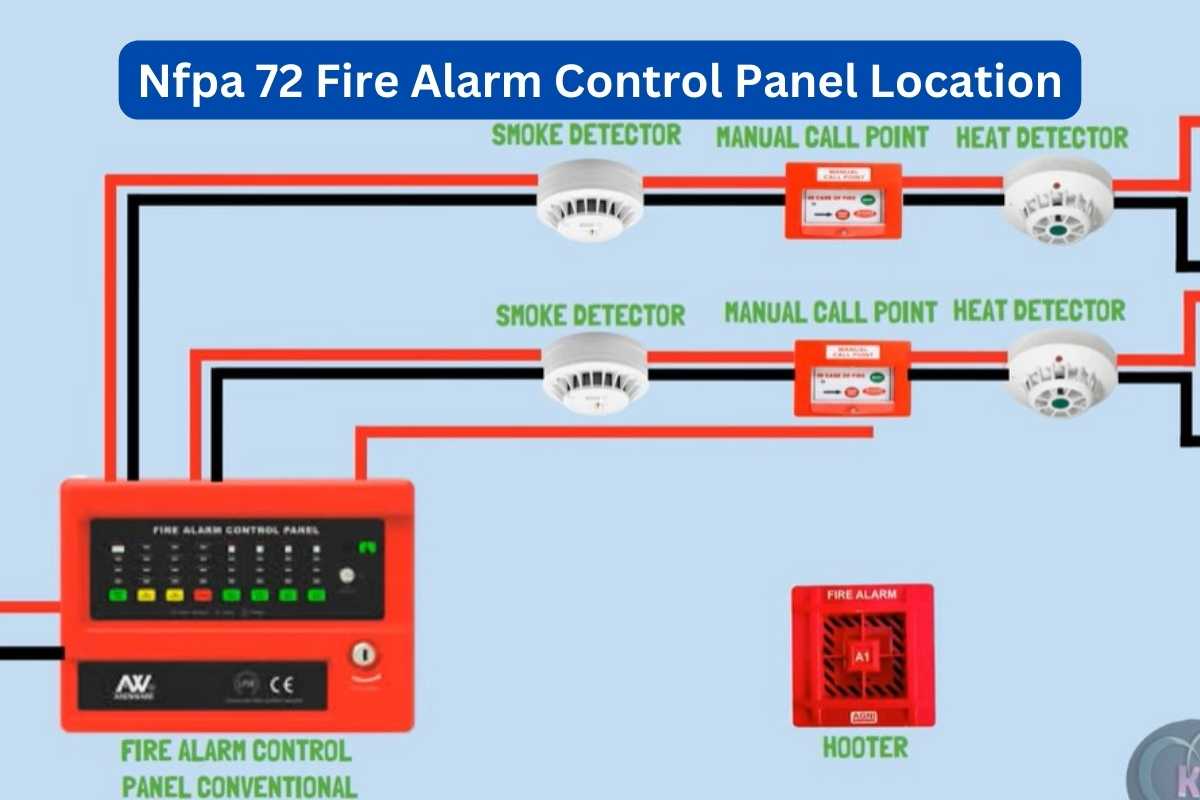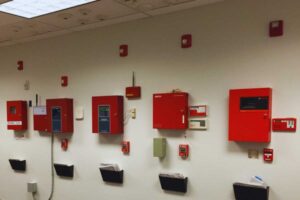Phone:
(701)814-6992
Physical address:
6296 Donnelly Plaza
Ratkeville, Bahamas.

The NFPA 72 Code mandates that Fire Alarm Control Panels (FACP) must be easily accessible. They are typically located in entry foyers, near the front entrance, or in dedicated electrical rooms.
Ensuring the proper placement of a Fire Alarm Control Panel is critical for both safety and compliance with NFPA 72 regulations. These panels act as the brain of a building’s fire alarm system, monitoring and controlling the various components to alert occupants and authorities in the event of a fire.
Installers must select a location that is convenient for system maintenance and inspection while remaining free from potential environmental hazards that could impede the system’s operation.
The FACP’s visibility and accessibility to first responders during an emergency is crucial. As fire safety technology evolves, adherence to NFPA guidelines remains a top priority for saving lives and protecting property.

Fire safety is a critical concern for every building, from homes to high-rises. The National Fire Protection Association’s NFPA 72 code plays a key role in safeguarding lives and property.
This code outlines the requirements for fire alarm systems, ensuring they function effectively in emergencies.
NFPA 72 is the definitive standard for fire alarm installation, monitoring, and testing. It specifies how fire alarm systems should sound, be installed, and react during fires.
Key elements include alarm placement, audibility, and clarity. It ensures fire alarms are heard and understood throughout a building.
NFPA 72 is critical in guiding the design and operation of fire alarm systems. One prime aspect is the control panel location.
Proper placement makes the difference in emergency situations. Panels should be in areas that are:
Compliance with NFPA 72 is not optional but a necessity for fire safety. It is a blueprint for saving lives and property from the dangers of fire.

Credit: www.firesmarts.com
Choosing the right location for fire alarm control panels is crucial to both safety and compliance with the National Fire Protection Association’s NFPA 72 code.
Strategic placement ensures efficient response during emergencies and facilitates routine maintenance, aligning with both safety measures and regulations.
Fire alarm control panels should be easily accessible to first responders. This means choosing locations that are clearly marked and unobstructed. These areas should be near building entrances to aid emergency crews.
Environmental conditions can impair panel functionality. It is essential to avoid areas of extreme temperatures, humidity, or anything that could damage the equipment.
| Do Install | Do Not Install |
|---|---|
| In temperature-controlled rooms | Near heat sources |
| Away from direct sunlight | In damp or moist areas |
| Protected from physical damage | Near vibrating machinery |
The National Fire Protection Association (NFPA) 72 sets guidelines for fire alarm systems. These rules help ensure that systems are effective and reliable. Installers must consider many factors.
These include choosing suitable locations and meeting strict standards for wiring and power supply. This post will look at key installation considerations under NFPA 72, ensuring your fire alarm system is up to code.
Accurate wiring and power supply are critical for a functional fire alarm system. NFPA 72 requires:
Integration with monitoring and communication systems is essential. The NFPA 72 demands:
Ensuring that fire alarm control panels meet the standards set by NFPA 72 is critical for safety. Compliance with NFPA 72 is not just a good practice—it is a requirement for protecting lives and properties.
Regular, routine inspections and proper documentation are the cornerstones of maintaining compliance. Let’s dive into what each of these entails.
Keeping your fire alarm system in top condition is a priority. The NFPA 72 code specifies that systems require routine inspections and testing by qualified personnel. This process helps to uncover any issues that could impair functionality. Regular inspections must include several key checks.
These inspections must follow the timeline outlined in NFPA 72—with some components needing monthly, quarterly, or annual checks.
Accurate documentation is as important as the physical testing of your fire alarm system. NFPA 72 requires detailed records for each inspection and test performed.
| Date | Activity | Personnel | Observations |
|---|---|---|---|
| MM/DD/YYYY | Inspection/Test | Qualified Individual | Any findings or repairs |
Keeping logs of all activities related to your fire alarm system is required. This record-keeping ensures a history of maintenance and functionality is always available, facilitating future inspections and helping to identify recurring issues.
Documentation should also detail corrective actions taken when problems are identified.
By following these steps, you keep your fire alarm system compliant and ready to perform when needed most. These records also provide a clear trail of due diligence in maintaining system safety.
The fire alarm control panel should be in a clearly labeled, easily accessible area, free from obstructions, and near the building’s entrance for quick firefighter access.
Fire alarm panels, as per NFPA guidelines, should be installed in easily accessible, conspicuous locations, such as near entrances or exits. They must be unobstructed and in areas that minimize exposure to environmental extremes.
The alarm control panel is usually located near your main entry door or in a utility closet. Always ensure access is unobstructed for quick reach during emergencies.
The fire control panel is typically located in a building’s main entrance or security room for easy access in emergencies. Always check with facility management for the exact location.
Selecting the proper location for an NFPA 72 compliant fire alarm control panel is crucial. It ensures quick responses in emergencies and adheres to safety protocols.
Remember, clear access and visibility are key. Consult with professionals and reference NFPA guidelines to make informed decisions for your building’s safety.
Stay vigilant, stay compliant, and prioritize protection.